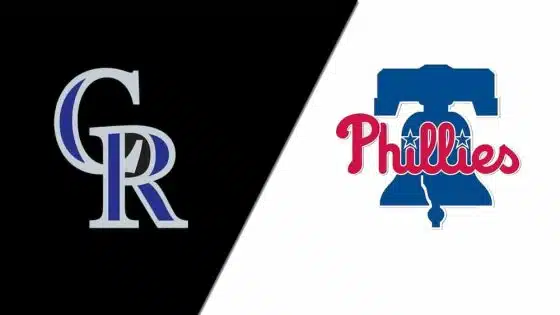By: Matt Alberston, Historical Columnist
Home runs were a rarity in the Dead Ball Era and early Live Ball Era. Players who stand out as bonafide home run hitters in these era's were Gavvy Cravath, Babe Ruth, and Rogers Hornsby. But a rather unknown and forgotten Phillies outfielder of that generation holds the claim to fame of being the first player in major league history to hit more than 200 home runs – Fred "Cy" Williams.
Williams was born on December 21, 1887 in the town of Wadena, Indiana which had a population of 75 people in 1890. He was given the nickname "Cy" when he enrolled at the University of Notre Dame, where he excelled in multiple sports, including football, where he was a teammate of the infamous Knute Rockne.
Williams hardly played organized baseball before he matriculated at Notre Dame, but once on the diamond in South Bend, he quickly caught the attention of scouts working for the Chicago Cubs. He was offered a contract while in college, but he declined, with the promise that he would sign if the Cubs were still interested in him once he graduated. Later, the same scout left the Cubs to work for the Cleveland Indians and approached Williams about signing for Cleveland. He declined, stating that he promised to only sign with Chicago.
Soon after graduation, Williams signed with and reported directly to the Cubs. The young outfielder played sparingly for several years and was eventually traded to the Phillies for Dode Paskert after the 1917 season. Williams went on an offensive tear while playing home games at Baker Bowl, hitting over .300 in six of the next seven seasons and hitting double digit home runs in nine straight seasons.
Career accomplishments
Cy Williams was one of the best all-around players to wear a Phillies uniform. His slash line during his 13-year Phillies career was .306/.380/.500. He led the majors in home runs in three separate seasons, all after he turned 32 years old, and in 1923 set a National League record with 41 round trippers, and regularly ranked among the top three in home runs while with the Phillies.
Defensively, although he had a poor throwing arm early in his career, he consistently ranked among the top three in putouts and outfield assists.
Most memorable moment
The Phillies were a 1920's National League doormat, finishing above seventh place only once in the decade (1929). Despite that, Williams went on an offensive tear for the ages that May. Over the course of 30 games in May 1923, Williams drove in 44 runs and only once went two consecutive at-bats without an RBI. The Phillies scored an amazing 174 runs, an average of 5.8 per game. Yet the Phillies compiled a 7-23 record that May, thanks to the pitching staff giving up 232 runs for an average of 7.7 runs per game.
Williams' 1923 campaign was arguably the best of his career. He hit 41 home runs, one behind National League record holder Rogers Hornsby, and drove in 114 RBI. He hit a home run once in every 13 at-bats. His 41 homers were a club record that stood until 1929 when Chuck Klein hit 43.
Reasoning for ranking
Williams recorded eight seasons as a 2+ WAR player, and one season as a 5+ WAR player, which netted him 11 points. His 13 years as a Phillie added five points, raising his total to 16.
Williams is among the top 25 Phillies all-time in batting average, OPS, doubles, and RBI, adding four points to his overall score. He also ranks in the top 10 in hits and home runs, adding another six points to his total. Per our formula, Williams accumulated 26 points, one more than Chris short and three more than Gavvy Cravath.
Formula explained
The player rankings formula combines both traditional and advanced statistics/metrics and assigns a point total to each category. These statistics only reflect the player's Phillies career.
Previous Entries





